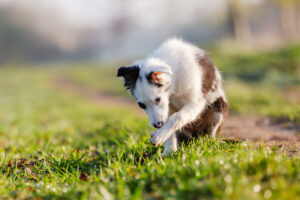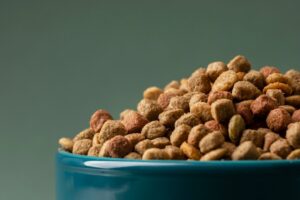We all love spoiling our furry companions with delicious treats. After all, they bring so much joy into our lives! While venturing into the world of homemade dog treats can be a fun and rewarding experience, it’s crucial to be aware of certain ingredients to avoid in dog treats. Some seemingly harmless ingredients can be toxic or cause digestive upset for our canine friends.
By understanding these ingredients to avoid in dog treats, you can ensure your homemade creations are not only delicious but also safe for your pup to enjoy.
Top 10 Ingredients to Avoid in Homemade Dog Treats:
1. Chocolate
This is a big one! Chocolate contains theobromine and caffeine, which are toxic to dogs. The severity of the reaction depends on the type and amount of chocolate ingested. Dark chocolate is the most dangerous, while white chocolate poses a lesser threat. Symptoms of chocolate poisoning in dogs can include vomiting, diarrhea, tremors, seizures, and even death.
2. Grapes and Raisins
The exact reason why grapes and raisins are toxic to dogs remains unknown. However, they can cause kidney failure in some dogs, even in small amounts. It’s best to avoid these ingredients to avoid in dog treats altogether and opt for dog-safe alternatives like blueberries or cranberries (in moderation and with veterinary approval).
3. Onions, Garlic, and Leeks
These members of the allium family contain N-propyl disulfide, which can damage red blood cells in dogs and lead to anemia. Even small amounts of onions, garlic, or leeks can be harmful. Onion powder and garlic powder are concentrated forms and pose an even greater risk.
4. Macadamia Nuts
While safe for humans, macadamia nuts can cause a variety of problems in dogs, including vomiting, diarrhea, weakness, tremors, and hyperthermia (elevated body temperature). The severity of the reaction can vary depending on the amount ingested. It’s best to keep all nuts out of reach of your dog and avoid using them as ingredients to avoid in dog treats.
5. Xylitol
Xylitol is a sugar alcohol commonly used as a sugar substitute in sugar-free products, including chewing gum, candy, and some baked goods. Xylitol can cause a rapid drop in blood sugar in dogs, leading to weakness, seizures, and liver damage. Be sure to check labels carefully and avoid any products containing xylitol when baking for your pup.
6. Artificial Sweeteners and Flavors
While not necessarily toxic, artificial sweeteners and flavors offer no nutritional value and can potentially upset your dog’s stomach. It’s best to stick with natural ingredients when making homemade dog treats.
7. Cooked Bones
Cooked bones can become brittle and splinter, posing a choking hazard and potentially causing internal injuries. Stick with raw bones appropriate for your dog’s size and chewing habits.
8. Fatty Meats and Skin
While dogs are omnivores and can benefit from some fat in their diet, excessive fat can lead to pancreatitis, a painful inflammation of the pancreas. Avoid using fatty meats and skin as ingredients to avoid in dog treats. Lean meats like chicken or turkey breast are safer options.
9. Dairy Products
Many dogs are lactose intolerant, meaning they lack the enzyme needed to digest lactose (milk sugar) in dairy products. Consuming dairy can cause digestive issues like gas, bloating, diarrhea, and vomiting. Opt for dog-safe alternatives like lactose-free yogurt or small amounts of plain cheese as an occasional treat (with veterinary approval).
10. Alcohol
Even small amounts of alcohol can be toxic to dogs. Avoid using alcoholic beverages or extracts as ingredients to avoid in dog treats.
Keeping Your Pup Safe:
When it comes to homemade dog treats, ingredients to avoid in dog treats should be at the forefront of your mind. Here are some additional tips for keeping your pup safe:
- Always consult your veterinarian before introducing any new food to your dog’s diet, especially if they have allergies or any underlying health conditions.
- Start with small portions and monitor your dog for any allergic reactions or digestive upset.
- Store leftover treats in an airtight container in the refrigerator for up to a week or freeze for longer storage.
- Keep all potentially harmful foods and ingredients out of reach of your dog.
Conclusion:
By being mindful of the ingredients to avoid in dog treats and following these safety tips, you can create delicious and healthy homemade treats that your pup will love. Remember, a little planning and research go a long way in ensuring your furry friend
At Truffle Paws, we’re here to simplify this process for you. Our goal is to select the best insurance plan for your dog that keeps your dog healthy and ensures you’re ready for the financial responsibilities. Let’s connect today and protect your dog.







